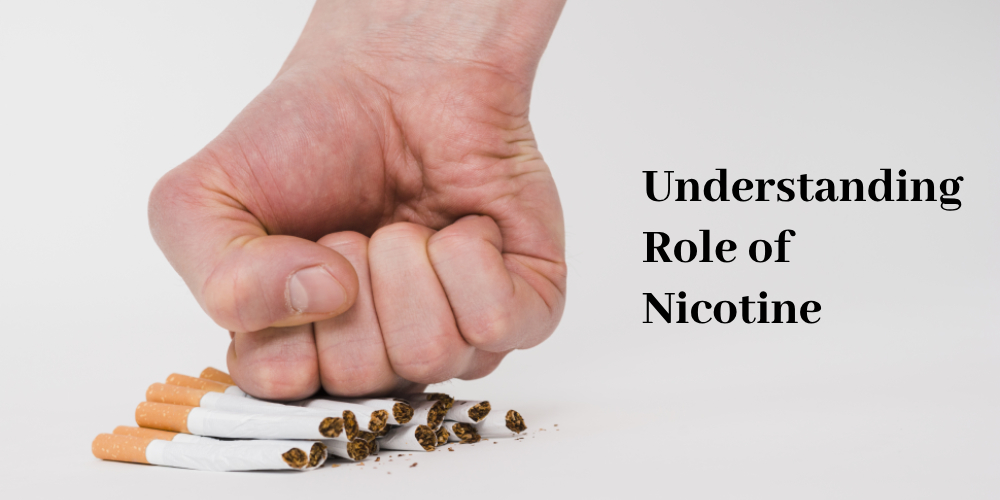
Understanding the Science Behind Smoking and the Role of Nicotine
Waking up every morning feeling refreshed, breathing deeply without a cough, and knowing you’ve broken free from the clutches of one of the most addictive substances on the planet. Sounds like a dream, right? This can become your reality once you understand the science behind smoking and the powerful role nicotine plays in keeping you hooked. Did you know that over 16 million Americans live with a disease caused by smoking? Despite the grim statistics, there’s hope. By delving into the complexities of nicotine addiction and exploring cutting-edge research on smoking cessation, we can uncover the path to a healthier, smoke-free life. In this blog, we’ll unravel the intricate relationship between nicotine and the brain, highlight the severe health consequences of smoking, and share inspiring stories of those who’ve successfully quit. Join us on this enlightening journey to understand why quitting smoking is so challenging and how you can triumph over this formidable addiction.
The Chemical Composition of Cigarettes
Cigarettes contain over 7,000 chemicals, many of which are toxic and can cause serious health issues. Some of the most harmful substances found in cigarettes include:
Tar: A sticky substance that coats the lungs and airways, leading to respiratory problems and cancer.
Carbon Monoxide: A poisonous gas that reduces the blood’s ability to carry oxygen.
Formaldehyde: A chemical used to preserve dead bodies, which can cause cancer.
Ammonia: Often used in cleaning products, it can enhance nicotine absorption in the lungs.
Hydrogen Cyanide: A toxic gas used in chemical weapons.
What is Nicotine?
Nicotine is the main addictive component in cigarettes and other tobacco products. Upon inhalation, it swiftly enters the bloodstream, reaching the brain in just seconds. There, it binds to nicotinic acetylcholine receptors, triggering the release of several neurotransmitters, including dopamine, which creates a pleasurable sensation.
The Role of Nicotine in Addiction
Nicotine addiction is primarily driven by its impact on the brain’s reward system. Here’s a closer look at how nicotine affects the brain and contributes to addiction
Dopamine Release: Nicotine stimulates the release of dopamine, a neurotransmitter associated with pleasure and reward. This release creates a sense of euphoria and relaxation, reinforcing the desire to smoke.
Neuroplasticity: Prolonged exposure to nicotine alters brain structure and function, particularly in areas related to learning, memory, and reward. These changes make it harder to quit smoking as the brain becomes reliant on nicotine to maintain normal function.
Withdrawal Symptoms: When nicotine levels drop, the brain’s reward system experiences a deficit in dopamine, leading to withdrawal symptoms such as irritability, anxiety, difficulty concentrating, and strong cravings. These symptoms can drive individuals to continue smoking to alleviate discomfort.
Tolerance: Over time, the brain becomes desensitized to nicotine, requiring higher doses to achieve the same pleasurable effects. This leads to increased consumption and deeper addiction.
Health Consequences of Smoking
Smoking is linked to numerous health problems, many of which are directly caused by nicotine and other harmful chemicals in tobacco. Some of the most significant health issues are
Cancer: Smoking is a leading cause of various cancers, including lung, throat, mouth, esophagus, pancreas, and bladder cancer.
Respiratory Diseases: Chronic obstructive pulmonary disease (COPD), chronic bronchitis, and emphysema are common among smokers.
Cardiovascular Diseases: Smoking increases the risk of heart attack, stroke, and hypertension due to the damage it causes to blood vessels.
Reproductive Issues: Smoking can lead to fertility problems, complications during pregnancy, and low birth weight in newborns.
Research on Nicotine Addiction
Several studies have explored the mechanisms of nicotine addiction and potential treatments:
Genetic Factors: Research has identified genetic variations that influence how individuals respond to nicotine, affecting their susceptibility to addiction. For instance, variations in the CHRNA5 gene, which encodes a subunit of the nicotinic acetylcholine receptor, can alter nicotine sensitivity and dependence.
Nicotine Replacement Therapy (NRT): NRT, such as patches, gums, and lozenges, provides a safer way to deliver nicotine and helps manage withdrawal symptoms. Studies show that NRT can double the chances of quitting successfully compared to going cold turkey.
Pharmacotherapy: Medications like varenicline (Chantix) and bupropion (Zyban) target nicotine receptors in the brain to reduce cravings and withdrawal symptoms. Clinical trials have demonstrated their efficacy in supporting smoking cessation.
Behavioral Interventions: Cognitive-behavioral therapy (CBT) and motivational interviewing are effective psychological interventions for smoking cessation. They help individuals identify triggers, develop coping strategies, and build motivation to quit.
The Science of Smoking Cessation
Quitting smoking is challenging due to the physical and psychological dependence on nicotine. Understanding the science behind cessation can aid in developing effective strategies:
Stages of Change Model: This model outlines the process individuals go through when quitting smoking, from pre-contemplation to contemplation, preparation, action, and maintenance. Tailoring interventions to each stage can enhance success rates.
Neurobiology of Quitting: Studies have shown that quitting smoking leads to neurochemical changes in the brain. Dopamine levels gradually normalize, and receptor densities return to baseline, reducing dependence over time.
Craving Management: Research indicates that cravings can be managed through mindfulness techniques, physical activity, and stress reduction strategies. These approaches help individuals cope with withdrawal symptoms without resorting to smoking.
Understanding the science behind smoking and the role of nicotine is crucial in addressing the pervasive issue of tobacco addiction. Nicotine’s rapid impact on the brain, its reinforcement of addictive behaviors, and the complex interplay of psychological and social factors all contribute to the formidable challenge of quitting smoking. However, knowledge is power. By recognizing the mechanisms that drive addiction, smokers can take informed steps toward breaking free from nicotine’s grip. With the support of effective cessation methods and a strong network of encouragement, achieving a smoke-free life is entirely within reach. The journey may be tough, but the rewards of a longer, healthier life and a sense of regained control are well worth the effort.




